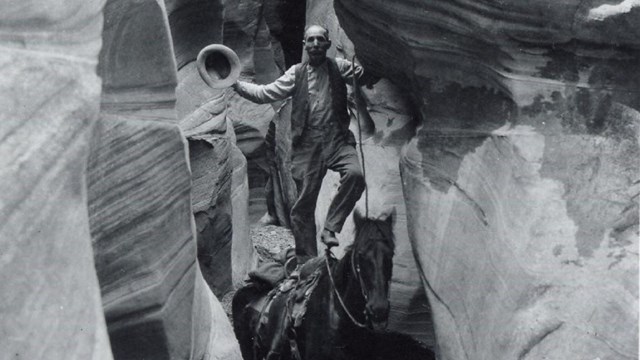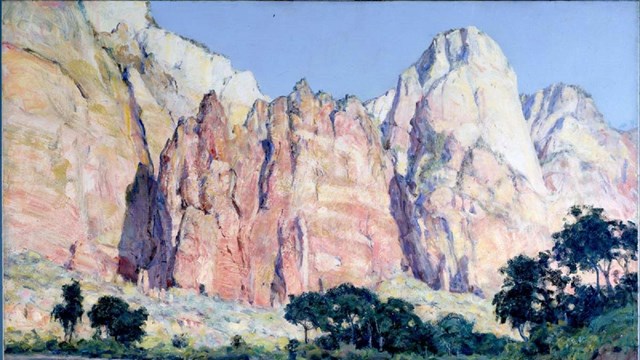|
The red and white sandstone cliffs of southwestern Utah tower hundreds of feet above the Virgin River, which meanders through their network of narrow canyons. The heart of Zion National Park is a secluded canyon that lies amidst this striking landscape. It includes lands originally protected by Mukuntuweap National Monument and Zion National Monument. The soaring sandstone cliffs, the deep ravines, and the seemingly hidden river valleys have been important to both Indigenous people and European American settlers for thousands of years. Approximately 7,000 years ago, nomadic Indian groups first frequented the Mukuntuweap/Zion region. As people slowly adopted more sedentary lifestyles, both the Virgin Branch Puebloan and Fremont Indian groups settled in this area. The Southern Paiute called this place Mukuntuweap, which means “straight canyon.” By AD 1,100, these groups migrated out of the region as Southern Paiute tribes moved in. The first European American settlers, Mormon pioneers, arrived in the area in the late 1800s. They named the area Zion, which is ancient Hebrew for “sanctuary” or “refuge.” The deep and spectacular canyons of this protected portion of the Virgin River Valley truly offer a safe haven to wildlife and humans alike. Few outsiders visited the region until a federal land survey in 1908 first exposed the area to the general public. The natural splendor of the region so struck the surveyors, that they encouraged President Taft to protect it. On July 31, 1909, Taft set aside approximately 16,000 acres for Mukuntuweap National Monument to preserve its “many natural features of unusual archaeologic, geologic, and geographic interest” (Proc No. 877). In his proclamation, the President noted the “labyrinth of remarkable canyons with highly ornate and beautifully colored walls, in which are plainly recorded the geological events of past ages.” In 1918, Munkuntuweap National Monument became Zion National Monument, and in 1919 the named changed again to Zion National Park. On January 22, 1937 President Roosevelt established a second Zion National Monument, preserving over 36,000 acres (Proc. No. 2221). The second Zion National Monument, which is now referred to as Kolob Canyons, was incorporated with Zion National Park in 1956. |

Archeology
Uncover Zion National Park's human history. 
People
Learn more about the diverse peoples who have called Zion home for thousands of years. 
Places
Discover historic places and structures at Zion. 
Museum Collections & Archives
Explore museum and archives collections of Zion. |
Last updated: January 8, 2025
